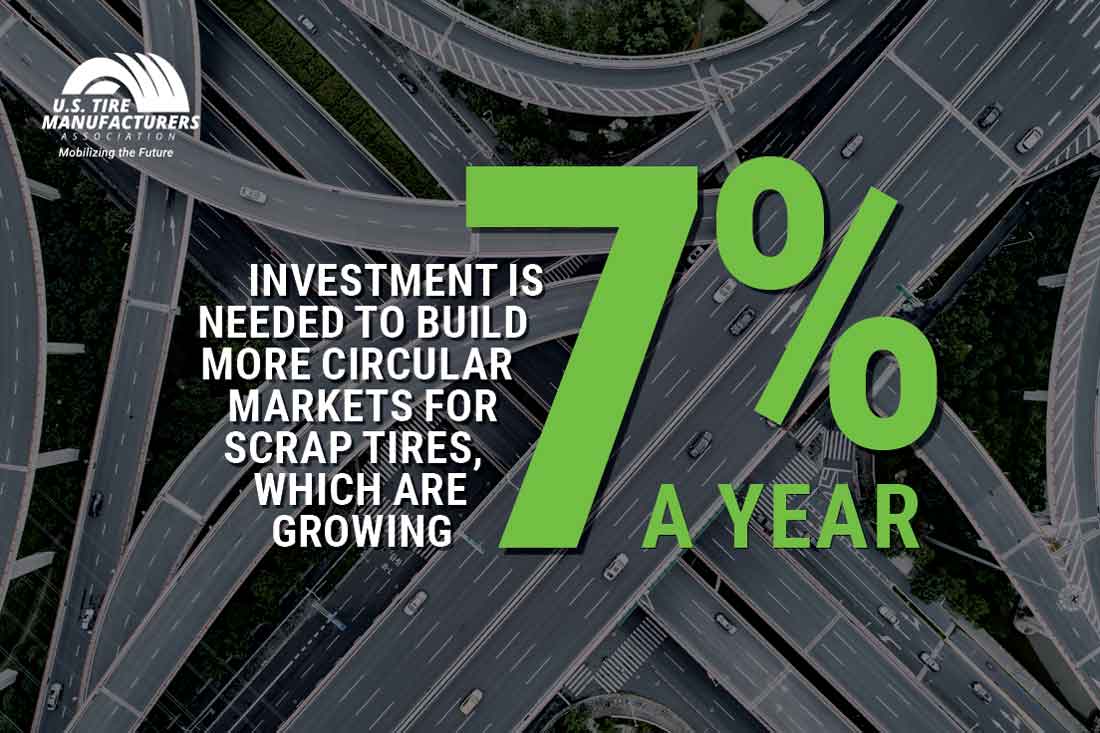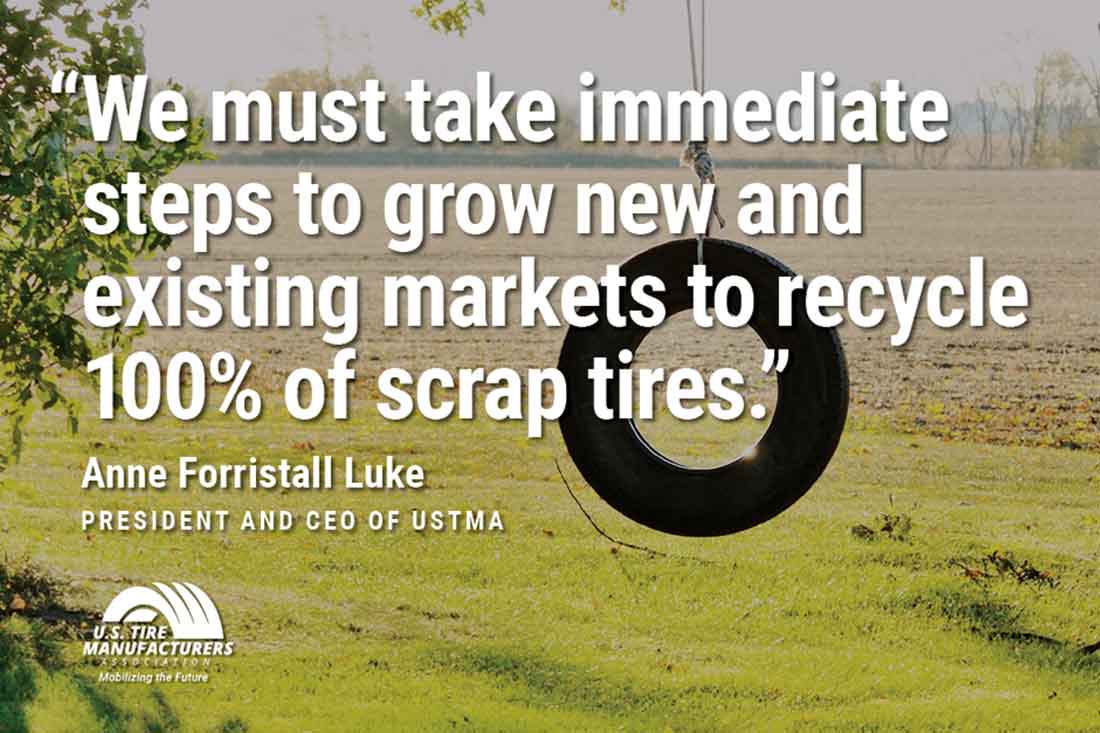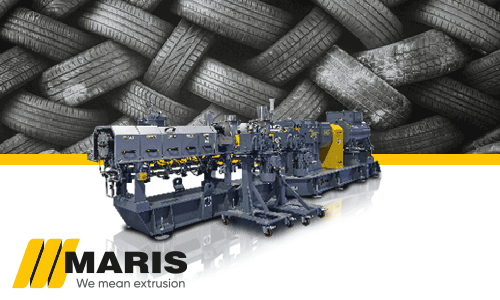USTMA scrap tire report urges continued investment in end-use markets
The U.S. Tire Manufacturers Association (USTMA) recently released the 14th Scrap Tire Management Report where it highlights that moving the world forward requires all stakeholders in tire recycling industry to act today with purpose and to share with key stakeholders one’s progress and commitment to sustainability, including tire safety, environmental stewardship and the communities one serves.
While companies in the U.S. and worldwide are making important progress on scrap tire management, much remains to be done. Take a moment to read through important data on USTMA's new sustainability information hub that highlights the tire industry's progress and commitment to sustainability, including tire safety and environmental stewardship and the industry's economic impact.
USTMA report finds that recycling end-of-life tires in the United States has stalled and emphasizes urgent need for continued investment. The report found that though tires remain one of the most recycled products in the United States, markets are not keeping up with the annual generation of scrap tires.
Graphics by USTMA.
Key takeaways in the report include:
- In 2019, the number of scrap tires generated each year grew by almost 7%, while the total number of scrap tires recycled has not significantly changed since 2017.
- In 2013, when scrap tire markets peaked, 96% of scrap tires entered end-use markets. In 2019, however, only 76% of scrap tires entered these markets.
- 56 million scrap tires remain in stockpiles - existing mostly in Arizona, Colorado, Michigan, New Jersey, New Mexico, Texas, Virginia and Washington. However, except for one, each of these states have taken the important step of developing active stockpile cleanup programs.
To address the issue, USTMA has urged state regulators, federal lawmakers, recyclers and environmental groups to do more to advance a circular economy:
- States must resist the urge to shift scrap tire funds away from their intended purpose: to grow scrap tire reuse and recycle markets, clean up piles and enforce state laws.
- Help to advance new public and private sector investments to create innovation challenges, research the lifecycle impacts of scrap tires in different end use markets, and create a national portal for states to share data.
- State and federal policies should encourage the growth of reclaim, reuse and recycle markets, including investments in sustainable infrastructure like rubber-modified asphalt and stormwater infiltration galleries.
USTMA's Scrap Tire Management Report
Read the full Scrap Tire Management Report on USTMA's new sustainability information hub that highlights the tire industry's progress and commitment to sustainability, including tire safety and environmental stewardship and the industry's economic impact.
Original content by USTMA.
Weibold is an international consulting company specializing exclusively in end-of-life tire recycling and pyrolysis. Since 1999, we have helped companies grow and build profitable businesses.













